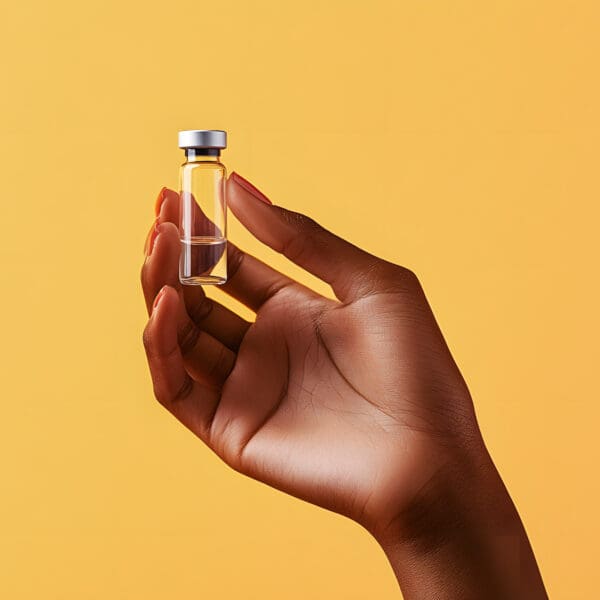Understanding the Science Behind Enhanced Oxygen Delivery and Stem Cell Mobilization
Cancer patients and their families are always looking for treatment options that can support their fight against this complex disease. Hyperbaric oxygen therapy (HBOT) has emerged as a valuable adjunctive treatment. It enhances conventional cancer therapies and helps manage treatment-related complications. This article explores the science behind HBOT, including how it improves oxygen delivery to tissues and stimulates the body’s natural production of stem cells.
What Is Hyperbaric Oxygen Therapy?
Hyperbaric oxygen therapy involves breathing 100% pure oxygen inside a pressurized chamber. While normal air contains about 21% oxygen, HBOT delivers oxygen at pressures two to three times higher than standard atmospheric pressure. This combination of high oxygen concentration and increased pressure allows your body to absorb significantly more oxygen than under normal conditions.
The Science of Enhanced Oxygen Delivery
How Oxygen Is Normally Transported
Under typical circumstances, oxygen travels through the bloodstream in two ways:
- Hemoglobin-bound oxygen: Carried by red blood cells, which is the primary transport method
- Dissolved oxygen: Present in the plasma, a smaller but crucial fraction that can reach areas red blood cells cannot
What Makes HBOT Unique
When you breathe 100% oxygen under increased pressure, the amount of oxygen dissolved in your blood plasma increases dramatically. According to Henry’s Law, the quantity of gas dissolved in a liquid is directly proportional to the pressure applied.
Key advantage: HBOT can deliver up to 20 times more dissolved oxygen to your tissues compared to breathing room air.
This increased oxygen availability is especially helpful in reaching tissues with poor blood flow, such as areas inside tumors that are typically oxygen-starved.
Addressing Tumor Hypoxia
Why Tumors Become Oxygen-Deprived
One major challenge in treating cancer is that tumors often outgrow their blood supply. Rapidly dividing cancer cells use up oxygen faster than it can be replenished, creating oxygen-depleted (hypoxic) regions within the tumor.
This hypoxia contributes to several issues:
- Treatment resistance: Hypoxic cancer cells are up to three times more resistant to radiation and many chemotherapy drugs
- Increased aggressiveness: These cells often become more invasive and are more likely to spread
- Enhanced survival: Hypoxia can also trigger survival pathways that help some cancer cells endure treatment
How HBOT Helps
HBOT temporarily reverses tumor hypoxia by forcing high concentrations of oxygen into the blood plasma. Studies show that tissue oxygen pressure can increase from a baseline of around 55 mmHg to 200–500 mmHg during HBOT. These elevated levels can remain for 15 to 60 minutes after treatment, providing a critical therapeutic window during which radiation and chemotherapy may be significantly more effective.
HBOT and Stem Cell Mobilization
What Are Stem Cells?
Stem cells are the body’s master repair cells. They reside primarily in the bone marrow and can develop into various specialized cell types. When your body is injured or in need of repair, these cells are mobilized into the bloodstream to support healing.
How HBOT Triggers Stem Cell Release
When a patient undergoes HBOT at 1.5 to 2.0 atmospheres absolute (ATA) for 90 to 120 minutes, several important biochemical reactions occur in the bone marrow. A key step is the production of nitric oxide (NO), which rises by over 1,000 nM. This increase activates metalloproteinase-9, an enzyme that releases stem cell factor (SCF) into circulation. SCF then triggers a large release of stem cells into the bloodstream.
Measurable Results
CD34+ stem cells, which are a gold-standard marker for hematopoietic and endothelial progenitor cells, show dramatic increases:
| Treatment Course | CD34+ Cell Increase | Percentage in Blood |
|---|---|---|
| Single Treatment | 2-fold | 0.20% to 0.40% |
| 10 Treatments | 5-fold | Significant Elevation |
| 20 Treatments | 8-fold | About 1.6% of blood cells |
Colony-forming capacity also rises from 16 ± 2 to 26 ± 3 CFCs per 100,000 monocytes.
Types of Stem Cells Mobilized
HBOT increases circulation of:
- CD34+ cells: Versatile and able to form blood vessels and other tissue types
- Endothelial progenitor cells: Assist with new blood vessel formation
- Mesenchymal stem cells: Capable of forming bone, cartilage, and connective tissue
This stem cell release builds cumulatively with each session, contributing to lasting tissue regeneration.
Clinical Benefits for Cancer Patients
Enhanced Angiogenesis and Tissue Repair
Mobilized stem cells express VEGFR-2 and CXCR4, receptors that allow them to migrate to damaged tissues. There, they contribute to the formation of new blood vessels, a process known as vasculogenesis.
Improved Wound Healing
Chemotherapy, radiation, and surgery often impair the body’s ability to heal. The oxygen-rich environment created by HBOT, combined with mobilized stem cells, supports every stage of wound healing: hemostasis, inflammation, proliferation, and remodeling.
Recovery from Radiation Damage
HBOT is particularly effective in treating late radiation tissue injury (LRTI), including:
- Osteoradionecrosis
- Soft tissue necrosis
- Radiation cystitis and proctitis
- Chronic fibrosis and pain
More than 75% of patients experience symptom relief lasting 6 to 12 months or longer.
Clinical Evidence and Outcomes
Documented Benefits
Clinical trials have shown:
- Reduced pain scores in patients with radiation injury
- Improved swallowing function and dry mouth symptoms
- Decreased fibrosis and scarring
- Better quality of life and functional outcomes in damaged tissue
Proven Safety
Large studies have demonstrated that HBOT does not promote tumor growth or cancer recurrence. A retrospective study of 45 cancer patients found no increase in tumor progression, metastasis, or mortality. Instead, patients experienced successful relief from treatment-related complications.
Long-Term Benefits
Even five years after treatment, patients report:
- Long-term symptom relief
- Better quality of life
- Functional recovery in irradiated tissues
- Prevention of further tissue breakdown
FDA-Approved Uses in Cancer Care
While HBOT is not FDA-approved as a direct cancer treatment, it is approved for many related complications:
- Radiation injury
- Non-healing wounds
- Surgical reconstruction support
- Severe infections that may arise during treatment
How HBOT Supports Standard Cancer Therapies
- Radiation therapy: Increases oxygen in tumors, making them more sensitive to radiation
- Chemotherapy: Improves drug penetration in hypoxic tumor zones
- Surgery: Enhances healing through stem cell activation and oxygen delivery
Managing Long-Term Side Effects
HBOT can significantly reduce:
- Radiation cystitis (bladder inflammation)
- Radiation proctitis (rectal inflammation)
- Osteoradionecrosis
- Chronic soft tissue injury
What to Expect During Treatment
Typical Protocol
- Frequency: 3 to 5 sessions per week
- Duration: 90 to 120 minutes
- Pressure: 1.5 to 2.0 ATA
- Total treatments: 20 to 40 sessions
Patient Experience
During treatment, patients:
- Sit or lie in a pressurized chamber
- Breathe 100% oxygen through a mask or hood
- Experience mild pressure changes similar to those during air travel
- Remain under continuous medical supervision
Safety Considerations
Common Side Effects
- Ear pressure or discomfort
- Temporary vision changes
- Fatigue or sinus pressure
Contraindications
- Absolute: Untreated pneumothorax
- Relative: Some chemotherapy agents may require timing adjustments
- Cancer status: Previously a concern, but now considered safe
Anti-Cancer Mechanisms of HBOT
- Reverses Tumor Hypoxia: Raises oxygen levels in tumors, which reduces aggressiveness
- Increases Sensitivity to Therapy: Enhances the effects of radiation and chemotherapy
- Induces Cancer Cell Death: Generates reactive oxygen species that trigger apoptosis
- Improves Tumor Microenvironment: Makes it easier for drugs and immune cells to reach cancer cells
- Enhances Immune Response: Boosts activity of T cells and natural killer cells
- Inhibits Abnormal Angiogenesis: Prevents formation of abnormal tumor-supporting blood vessels
- Does Not Stimulate Tumor Growth: Evidence consistently supports its safety in cancer settings
Who May Benefit
Patients who may benefit include those with:
- Radiation-related tissue damage
- Delayed wound healing
- Suppressed immune function
- Poor oxygenation due to cancer treatments
Making the Decision
Talk with your oncology team to:
- Evaluate whether HBOT fits your treatment plan
- Discuss safety and timing
- Weigh the potential benefits and risks
A Promising Supportive Therapy
While not a cure for cancer, HBOT provides significant benefits when used as part of a comprehensive care plan. It supports the body’s natural healing mechanisms, enhances other treatments, and relieves common side effects.
An 8-fold increase in circulating stem cells following a full HBOT protocol is one of the most impressive demonstrations of therapeutic stem cell mobilization in medicine. For patients facing complications from cancer treatments, HBOT offers real hope.
Always consult your medical team before beginning HBOT. With proper supervision, it can serve as a powerful, evidence-based addition to cancer care.
Ongoing research continues to uncover even more ways HBOT may improve treatment outcomes. Understanding how it boosts oxygen levels and stem cell production gives patients an important perspective on this valuable therapy.
–Dr. P
Please note: These statements have not been evaluated by the FDA. This information is for educational purposes only and is not a substitute for professional medical advice.















